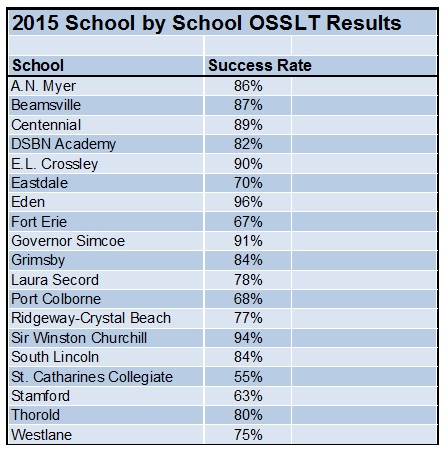September 23, 2015
Students Demonstrate Continuous Improvement
Students
at the District School Board of Niagara surpass the provincial success rate on
the 2015 Ontario Secondary School Literacy Test (OSSLT). Overall, 83% of DSBN
students who wrote the test for the first time met or exceeded the provincial
standard, which is measured as Level 3 on a 4 point scale. Across Ontario, 82%
of students met the standard.
The
DSBN’s 2015 results represent a 1 percentage point improvement over those in
2014 and a 3 point increase over 2013. “Overall, we’re encouraged with the
progress students are making in literacy. Supporting students in this critical
area has been a priority for schools. The hard work of staff and students has
made these gains possible,” said Helen McGregor, Superintendent of Education.
Evidence
of this determined focus on literacy is readily seen in the performance of two
groups: English Language Learners (ELL) and Special Education students. In
2014, 67% of ELL students met or exceeded the provincial standard. One year
later, 89% of ELL students at the DSBN were successful on the test. In 2015,
59% of Special Education students were successful; an 8 point improvement over
2014 and 4 percentage points above the provincial success rate for Special
Education students.
Included
in this year’s results, 11 DSBN high schools had success rates of 80% or above,
while 4 schools achieved success rates of 90% and above. Ten schools increased
their success rates compared to last year.
“Although
we are pleased with these results, it is important to keep in mind that the
EQAO is just one assessment of many that we use to gauge student learning. Having
that combination of assessments helps give us a clearer picture of how students
are progressing,” added McGregor.
DSBN
Director of Education Warren Hoshizaki said that the Board is committed to
providing students with the support they need to become successful in school.
“The real key to these improvements in student learning is the effort made by
all staff to look at learners as individuals and target specific programs and
supports to meet their particular learning needs,” said Hoshizaki.
For
more information about the EQAO, please visit www.eqao.com.
